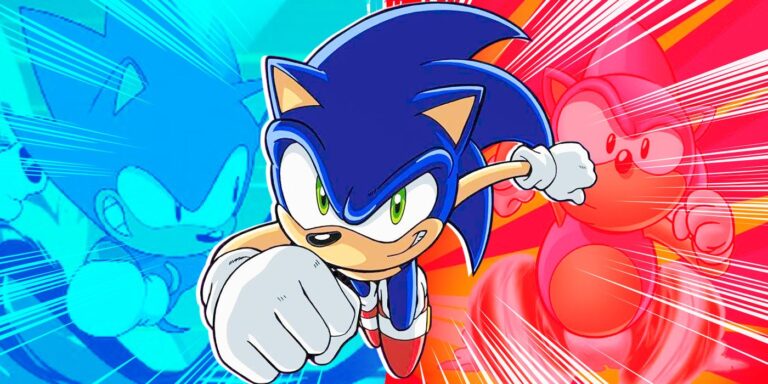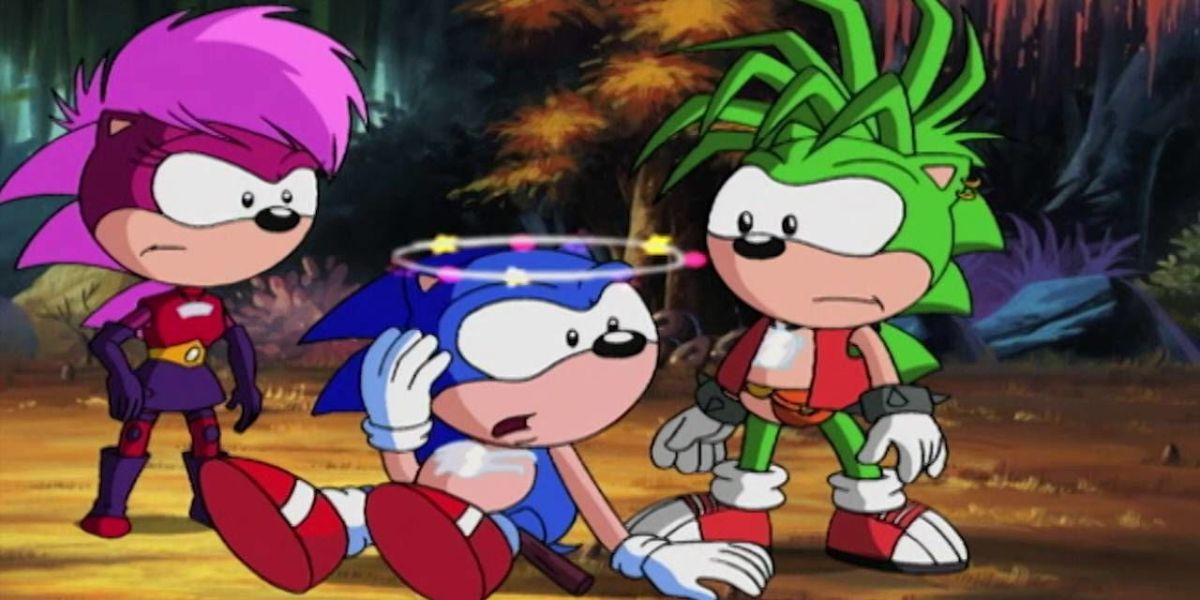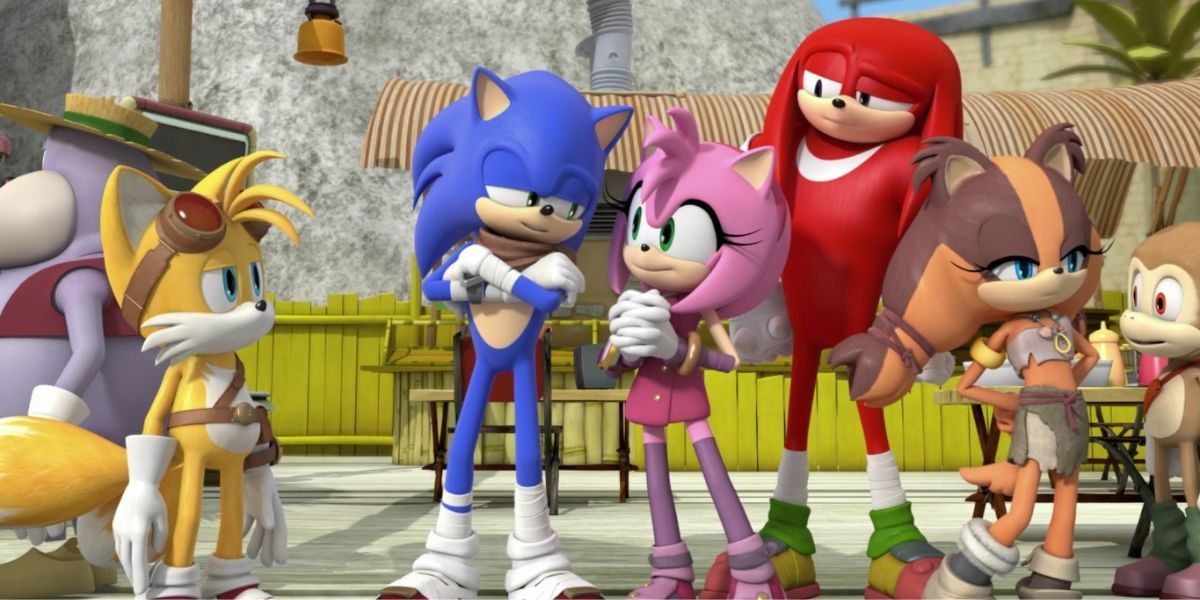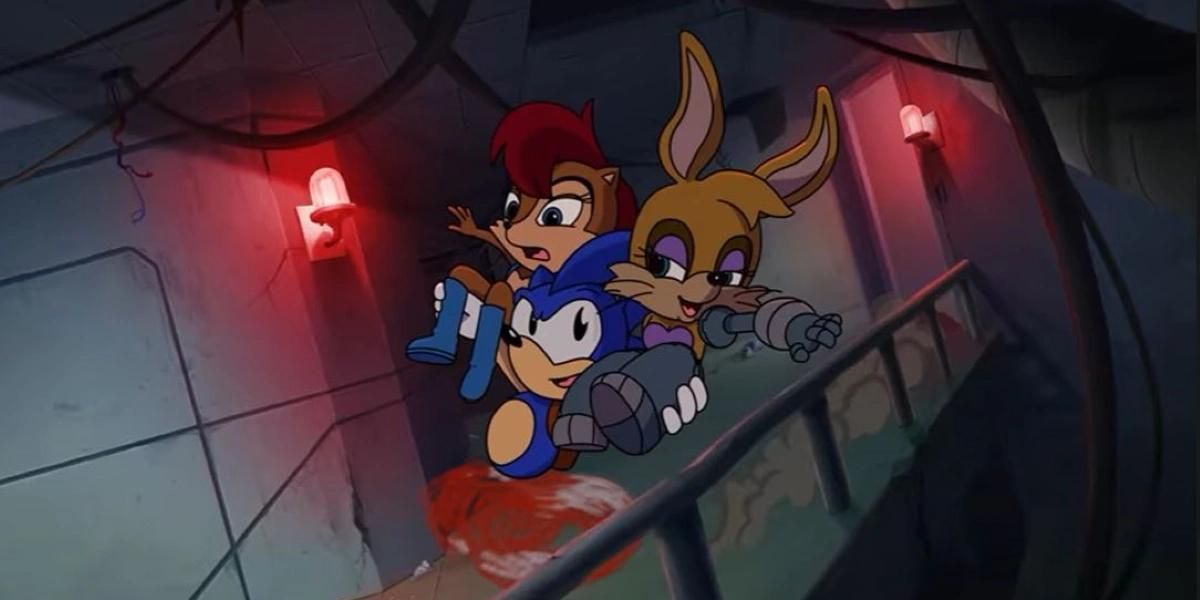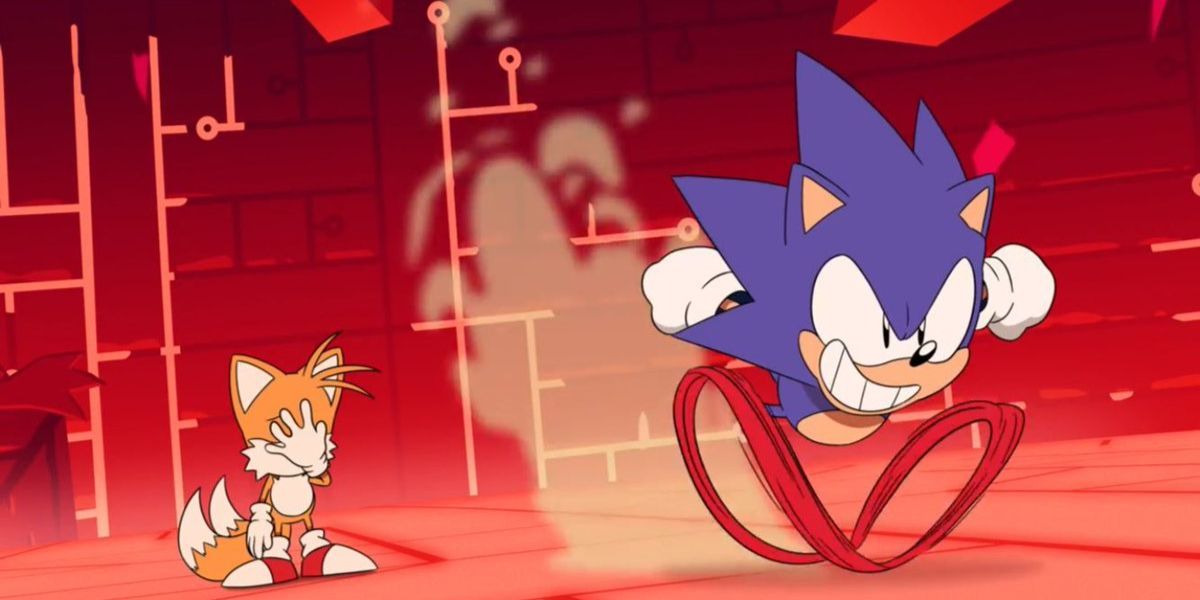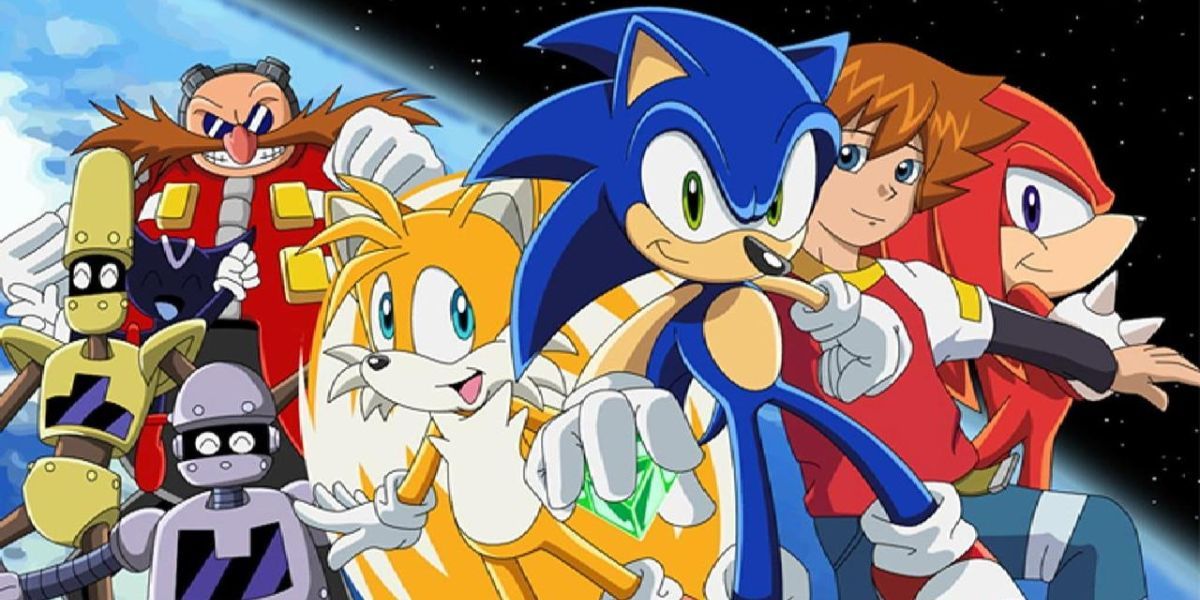Something endearing about the Sonic the Hedgehog franchise is that since its inception, there seems to be a new iteration for every generation of kids. Whether it be when Jaleel White (best known for playing Steve Urkel on Family Matters) was voicing the Blue Blur in the 90s Sonic the Hedgehog series or the “Sonic boom” of Roger Craig Smith in the 2010s, the hedgehog has always been there. With the upcoming release of Netflix’s Sonic Prime, now seems as good of a time as ever to look back on each animated version of Sonic the Hedgehog and what made each version special. Everyone tends to gravitate towards whichever show was the one they grew up with, but that doesn’t take away from what each show had to offer. Say what you will about the quality of the Sonic franchise over the years — the one thing you can’t say is that it ever got stale. So, here we go! This is every Sonic cartoon ranked from worst to best.
‘Adventures of Sonic the Hedgehog’ (1993)
The first show based on the Sonic games, 1993’s Adventures of Sonic the Hedgehog, didn’t exactly hit the ground running with only the first two games out and not much else official material to work off of. So, the decision was made to make Adventures of Sonic the Hedgehog similar to a Looney Tunes show. It makes sense — Sonic’s “way too cool” 90s attitude taped onto a super snarky Bugs Bunny type of character who always wins, works. It’s not exactly the same, but it follows some sound logic. Besides Sonic, Tails, and Dr. Robotnik, there isn’t much similarity in this television series to the games, and the jokes aren’t amazing. However, picture this: The year is 2002, you’re 5 years old, and your parents take you to Blockbuster. Along those off-yellow shelves next to a litany of Pokémon and Disney VHS tapes, you see your favorite video game character. You go home, pop it into the boxy VCR and sit back with way too much candy and watch something that you never knew existed. And it made you laugh! That’s the real magic of this Sonic adaptation — it’s excellent as an introduction to the world of cartoons and slapstick humor. Is this show good? Not really. Do the memes that came from it make it worth it? Totally. If you watched this at the right age, was it awesome? No — it was rad.
‘Sonic Underground’ (1999)
Did you know that Sonic has a sister and a brother? Well he doesn’t! Except in Sonic Underground. The plot of this iteration resembled nothing from any of the Sonic games, comics, or past cartoons besides the fact that it had a similar art direction and that Sonic was present. In Sonic Underground, the backstory is that Sonic is a child who was separated from his Queen mother and two siblings when he was baby thanks to some kind of vague prophecy. The show follows Sonic as he teams up with his brother Manic and sister Sonia, as they try to find their mom. If you hear the intro once you won’t be able to get it out of your head for the next 20 years. In addition to the royalty element, Sonic Underground is also a musical show with each Sonic sibling playing their own instruments to form a rock band. As you can tell, this show is aggressively 90s. The only reason it ranks above Adventures is that the sheer amount of 90s pop culture influence can make it a charmingly nostalgic viewing experience. This show also marks the first animated appearance of the character Knuckles, who in this show is voiced by Brian Drummond. Besides being one of the original English voices of Vegeta in Dragon Ball Z back in the day, Drummond is also returning to the world of Sonic as the new voice of Eggman (previously named Dr. Robotnik in other shows) in Sonic Prime! Everything is coming full circle.
‘Sonic Boom’ (2014-2017)
Admittedly, this is the only Sonic TV show this author didn’t grow up with, so the lack of nostalgia for it almost makes for an unfair comparison. But that doesn’t mean the high points of this show can’t be appreciated. Sonic Boom is mostly remembered for the notoriously buggy video game on Wii U that was meant to serve as a tie-in to the cartoon, but the cartoon fared much better. This version of Sonic was more of an episodic comedy, and the style of humor was very meta. In the 2010s, after a decade of games that failed to meet a lot of fans expectations, the Sonic brand made a hard left turn into self-deprecating meta humor. This can be seen in every aspect of the character from the time, even extending to the Sonic Twitter account. Although this sense of humor has died down in the past few years, the titular hedgehog in Sonic Boom is almost like a blue Deadpool the way he jokes about himself and the franchise he’s in. The sense of humor proved to be a bit hit-and-miss, with the show not lasting very long, in addition to the channel it aired on, Cartoon Network, giving new episodes terrible time slots. It would air early in the mornings, at 7 AM and 6 AM on Saturdays and Sundays respectively. However, when the jokes actually did land on Sonic Boom, they really hit. Watch any short clip on YouTube and the comedy still works. Maybe the meta nature of it turned some people off, but the humor was far funnier and more clever than it had to be.
‘Sonic the Hedgehog’ (AKA: Sonic SatAM) (1993)
Yet another short-lived Saturday morning cartoon and produced at the same time as Adventures, Sonic the Hedgehog (most commonly referred to as Sonic SatAM) took the character in a more serious and serialized direction. The story follows Sonic with his Freedom Fighter animal buddies, most of whom originated from the Archie Sonic comic books, as they try to fight against the evil Dr. Robotnik. Instead of being a comic relief villain as he is in most shows and games, Robotnik is a real threat here. He’s an industrialist who has taken over and polluted the planet with his toxic machinery. For a kids cartoon, it is pretty dark. Maybe not Batman: The Animated Series serious, but it is still more dramatic than most versions of the character. While Sonic SatAM also didn’t last very long, it left a pretty big impact on the Sonic franchise. Combining elements from the games and comics at the time made people feel more invested in it, and the fact that it ended on a cliffhanger made fans even more ravenous. Shades of the show can even be seen in games over 20 years later in things like Sonic Forces, where Sonic is also a rebel fighter. It’s very Star Wars, and that’s one of the reasons it will always be remembered fondly.
The Shorts!
Over the years, Sonic has starred in several standalone animation shorts. None of these are TV shows, but they’re not exactly movies either (even if the 90s OVA is labeled as one for its American release). There isn’t a lot to say about the OVA besides that the cowboy hat they gave Knuckles looks excellent on him and that the fight scenes with Metal Sonic are great. The shorts the Sonic YouTube channel has been producing these last few years have been amazing. With direction and art design from one of the best artists from the IDW run of Sonic the Hedgehog comics, Tyson Hesse, these shorts really capture the appeal of the most beloved Sonic characters. Hesse’s designs and art for the characters are so great that he was the person that the production team of the 2020 Sonic the Hedgehog film contacted to redesign the character after the backlash to the first trailer. Since then, Hesse has been one of the more prominent behind the scenes figures of the franchise, and his animated shorts highlight why he was the perfect guy for the job. There isn’t much story to talk about with his shorts — they are more like silent comedy sketches featuring Sonic and a few other supporting characters. But, the crisp animation and great sight gags make these short series like Sonic Mania Adventures and Chao in Space some of the purest and most wholesome Sonic content that’s ever been made.
‘Sonic X’ (2003-2005)
Sonic X can potentially be a rough show to justify being the best. The writing is kind of meh, the new cast taking over the characters had a mixed reception at the time, and it’s overall a little strange, and even at times cringy. But here’s the thing. That’s looking at it from the viewpoint of an adult, whom the show was very much not made for. All of these shows bump into this same issue. Every show on this list was made just for kids. They need to be graded on that scale, and that is the scale these shows have been graded on so far. If you are an adult who is new to Sonic, none of these shows will have much to offer you. But, just because they’re being critiqued on the grade scale of a childrens show doesn’t mean it’s a lower form of art. Critiquing and reviewing films and television isn’t about how good it is in relation to something else. It’s about meeting the story on its own terms and judging it based on how well it accomplishes the goals it set out for. In this regard, Sonic X is by far the best Sonic show.
Sonic X is the first Sonic TV show that was an anime and took influence straight from the games. Unlike the cartoons of the 90s that were riddled with original characters, or characters from the non-canon Archie comics, this show uses Sonic and all his buddies from the games: Tails, Amy, Shadow, the Chaotix, they’re all there! The original human characters are somewhat bland, but as the series went on, they slowly faded into the background anyway. Sonic X is also notable for being the only Sonic show that aimed to adapt the stories from the games. And it was awesome! Sonic X was the perfect Saturday morning cartoon back in the day. It was fun, comedic, and had that same “cool” factor that the games had at the time. It’s more than likely that if you asked someone about their favorite Sonic cartoon, their answer would likely be the first Sonic show they watched as a kid. But hands down this is the Sonic show that is the most… well, Sonic. It embraced every cool and goofy thing from the Sonic franchise up until that point, and did so with utter sincerity. That’s why it’s number 1 on this list.
But, perhaps it won’t remain as the best Sonic show! The newest addition to Sonic’s TV catalog, Sonic Prime premieres on Netflix on December 15th.


